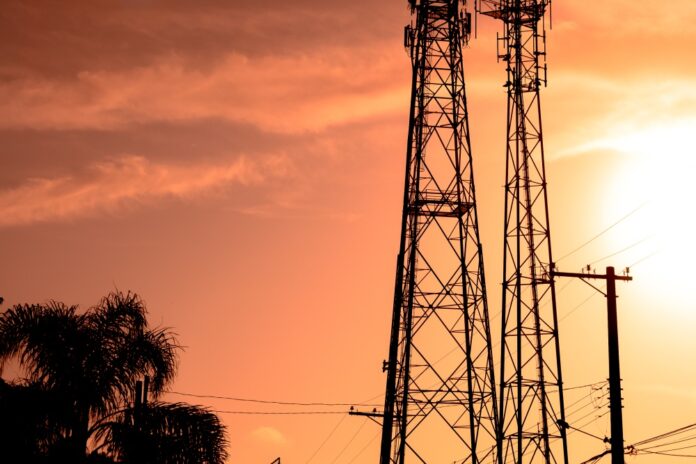Footprints shrink by saving towers and blue sky thinking
Telcos are pouring more resources into sustainability with Swisscom, Vantage Towers and Vodafone all announcing new measures, ranging from the theoretical the practical. In May a GSMA report in May found that 62% of the telecom industry by revenue has committed to reducing emissions in the next decade. Then a report by ABI Research excited more commitment when it announced that Telefónica, KPN and Deutsche Telekom are currently the top three European mobile operators ranked on sustainability and climate sensitive practises. But are the performance indicators always tangible?
Accenture claims its climate strategy for Swisscom will cut a million tons of emissions by 2025, a figure which would be 2% of Switzerland’s entire carbon footprint. Swisscom has a stated ‘climate target’ and turned to Accenture for its ‘decarbonisation insights’ on how to be a ‘sustainability leader in the telco space’. Accenture helped Swisscom integrate an ‘emerging interpretation’ of an emissions type, Scope 4, that the company can use to make customers mind their emissions.
“We strive every day to be more ambitious with our sustainability commitments,” said Res Witschi, head of sustainable digitisation at Swisscom, who claimed they would have an impact the company, its people, customers and the environment. According to Accenture’s own research into environmental, social and governance (ESG) indicators, companies with sustainability strategies perform better.
“Technology is critical for improving sustainability,” said Accenture MD Stephan Schneider. It expedites the transition to net zero and builds sustainable organisations with responsible value chains and gives customers sustainable choices, it’s claimed. “Swisscom is positively impacting the planet by combining technology solutions while driving business value,” said Schneider. The telco can boost its business by offering customers a larger number of green products and services to choose from to reduce their emissions, the management consultant said.
One of the criticisms of ESG and sustainability is that its open to interpretation. Many regard the performance indicators as nebulous and rank ESG as a form of corporate window dressing. Meanwhile, at ground level, a Vodafone subsidiary has produced physical evidence of its commitment. Vantage Towers Ireland, the towerco spun off by Vodafone, has announced a five-year sustainable maintenance deal with Cavan-based engineering firm Obelisk, designed to lengthen the lifespan of its Irish network. The first line support programme is designed to lower Vantage Towers’ carbon footprint by extending the lifespan of towers by up to three decades. It is one of the first major support contracts signed by the Irish entity, founded in 2020 as a Vodafone subsidiary.
Vantage has 83,000 sites across 10 markets. In Ireland, it operates from 1,300 locations. Ireland is the second market in Europe after Portugal to initiate this preventative infrastructure maintenance programme. Obelisk was acquired by Constructel Visabeira, a subsidiary of telecoms and energy networks giant, Grupo Visabeira. “This programme brings a new dimension to tower maintenance. Previously the industry generally looked at active components, such as antennae, and not the environment around it,” explained Vantage Towers MD, Brian McHugh. “By carrying out active ongoing maintenance of the infrastructure on our sites we can prolong the useful asset life of the tower.”
Vodafone has also worked with Keysight Technologies, Wind River, Intel and Radisys to make radio access network (RAN) less energy intensive. The pact have been working together since Spring, after they successfully colluded to cut power consumption by 12% at the O-RAN Alliance’s recent Global PlugFest Spring 2022 event.
Keysight’s O-RAN Energy Savings system has an open RAN distributed unit (O-DU) and open RAN centralized unit (O-CU) software, open RAN cloud software and processors. Their combined system of telemetry, power management and accelerator features keep a lid on consumption by any multi-vendor open RAN system. The electricity bill run up by the open RAN infrastructure was respectively 9% and 12% lower during high and low mobile traffic periods.
Vodafone’s Open RAN senior engineer Nikoleta Patroni said more tests are needed to confirm whether the lab conditions created will equate to real life across multiple open RAN sites supporting real traffic. “We plan to exceed the energy efficiency of today’s mobile networks. To achieve this, we need a standard approach to evaluate, test, measure and monitor energy consumption of disaggregated multi-vendor open RAN,” Patroni said in a statement. “Transparency will accelerate the acceptance of open RAN technology for larger-scaled commercial deployments.”
In the UK the government has invested £1.6 million in a joint-funded £3.6 million competition with the Republic of Korea to encourage R&D projects that would improve the use of power by O-RAN telecoms systems.
A GSMA report in May found that 62% of the telecom industry by revenue has committed to reducing emissions in the next decade. In turn ABI Research ranked Deutsche Telekom (DT), Telefónica and KPN as the top three European MNOs for sustainability and climate sensitive practises, which started a fashion craze.
However, true telecom sustainability will require continued strategic collaboration on the part of some of the industry’s biggest players, said Vodafone’s Patroni: “We can’t do it alone, we need the entire industry to pull together.”



